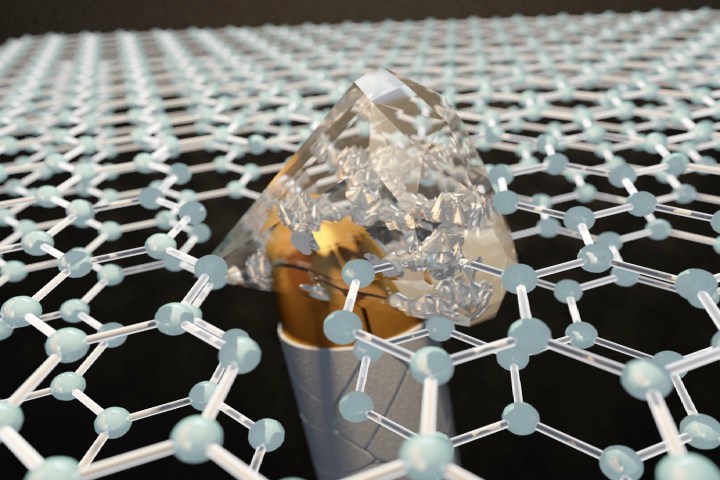
The possibility of a graphene shield was hypothesized by professor Angelo Bongiorno at Georgia Tech, who developed computer models showing that it would work in theory. It was then successfully demonstrated for real by researchers at the City University of New York. In an experiment, the team showed that even a diamond tip is unable to perforate a two layer epitaxial graphene film.
“This work shows that it is possible to have a film which is only two atoms thick, meaning thousands times thinner than a hair, and still be as hard and stiff as a block of diamond,” Elisa Riedo, professor of physics at the City University of New York, told Digital Trends. “Not only that, our experiments and the theory of Bongiorno’s group demonstrate that you can start with two atomic layers of graphite, called graphene layers, which are flexible as a piece of paper, but locally they can become ‘diamene’ upon impact or indentation with a hard tip at room temperature.”
As well as ultralight, bulletproof films, Riedo suggests that potential real-world applications for the material could potentially include wear-resistant flexible protective coatings and, in the future, possible electronics applications. Intriguingly, the graphene shield’s ultra-hardening effect only results when two sheets of graphene are used, with extra layers appearing to have a detrimental impact.
An academic paper describing the work, titled “Ultrahard carbon film from epitaxial two-layer graphene,” was recently published in the journal Nature Nanotechnology.
Hey, between this and shields made out of spiderwebs, 2017 has turned out to be a pretty great year for protective materials science innovations!


